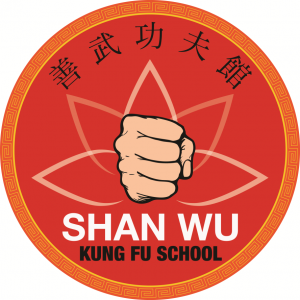The Origin of Wing Chun (A Traditional Story)
During the reign of Emperor Jiaqing (1796-1820), Kung Fu masters who opposed the Qing Dynasty were hunted down and murdered. One master of Shaolin Kung Fu was Yim Yee, who fled from Quanzhou in Fujian province to take refuge with his family in Liancheng, living as a tofu merchant. Yim Yee had a daughter named Yim Wing Chun who had secretly trained in Kung Fu with her father since early childhood.
As a teenager, Yim Wing Chun had fallen in love with Leung Bok Chau. Before they could be married, however, Yim Wing Chun caught the eye of a local warlord. She rebuffed his advances until he made a startling offer: he would rescind his marriage proposal if she could beat him in a fight. Yim Wing Chun agreed, and her father negotiated for training time. The warlord gave her until the following spring to prepare for the fight, and to become his bride.
News of Yim Wing Chun’s predicament spread throughout the small village, and soon she was approached by an older woman whom she had befriended at the tofu shop. The woman revealed that her name was Ng Mui and that she was one of the Shaolin Five Elders who had managed to escape the burning of the temple. She knew that the tiny, young Wing Chun was no match for the fierce warlord, but she had a plan.
Ng Mui had been using her time in seclusion to synthesize a new fighting system out of the Snake and Crane styles of Shaolin Kung Fu to better suit a woman or other fighter who did not have the advantage of size and strength. She began to train Wing Chun in this new style, concentrating only on the essential elements that could be absorbed in a few months instead of a few years.
By the time the warlord returned the following spring, Yim Wing Chun was ready. In front of the entire village, she demonstrated a type of Kung Fu that had never been seen before. She used the warlord’s mass and strength against him, flowing around his attempts to strike or grab her. Despite a weight difference of nearly a hundred pounds, she threw her entire bodyweight into specific targets that broke the warlord’s balance and left him vulnerable to repeated strikes. When the warlord crumpled unconscious at Wing Chun’s feet, a roar went up from the crowd.
Yim Wing Chun was able to marry her true love, Leung Bok Chau, and true to the custom of that time, passed on her Kung Fu knowledge to him. Since many of the villagers had witnessed the power of this new style, Yim Wing Chun and her husband established a secret school to teach those who wanted to learn. After the death of her father, Yim Wing Chun and Leung Bok Chau left the village, settling in Zhaoqing in Guangdong Province. Once more they began to teach, but this time the new style had a name: Wing Chun Kung Fu.
The Evolution of Wing Chun
According to the oral tradition, the art of Wing Chun was passed first to Leung Lan Kwai, who took over the school in Zhaoqing. Around the year 1815, a martial artist and actor named Wong Wah Bo came to perform in Zhaoqing and began to study with Leung Lan Kwai. Wong taught Leung the staff forms used in the Chinese opera, and Leung taught Wong his Wing Chun Kung Fu.
When the opera troupe left Zhaoqing, Wong Wah Bo began to teach other actors on the boat, known as the Red Junk. One of the skilled performers was Leung Yee Taï. As Wong Wah Bo and Leung Yee Taï practiced Wing Chun, they caught the attention of the boat’s cook. It turns out that the cook was really the abbot of the ruined Shaolin temple, Chi Shin, who had fled at the same time as Ng Mui and was hiding in disguise.
It was Chi Shin that incorporated the techniques of the Six and a Half Point Pole into Wing Chun, and together the three men tested, refined and codified the art into distinct forms and drills. As the Red Junk continued its travels, the art was passed to Leung Jan, a well-known herbal Doctor in Foshan. It is said that Leung Jan grasped the innermost secrets of Wing Chun and was able to attain the highest level of proficiency. As martial arts in general began to become popular once more, many Kung Fu masters came to challenge Leung Jan. According to the histories, Leung Jan was never once defeated, and became very famous.
Leung Jan only taught a handful of private students including his sons Leung Chun and Leung Bik, and two other students, “Woodman” Wah, and Chan Wah Shan. Chan owned a money changing stall near Leung’s herbal medicine clinic in Foshan, and was known for his powerful strength and intense interest in Kung Fu. Chan eventually became Leung’s disciple, learning both Wing Chun Kung Fu and Traditional Chinese Medicine.
Due to Leung Jan’s fame, the Qing government sought him out to become head instructor for the military. Chan Wah Shan went in his place, but only served a short time before retiring to open a health clinic. He continued to teach Wing Chun Kung Fu right up to the time of his death. Chan accepted his last student when he was 70 years old: a teenager named Ip Man. From Ip Man a singular but significant shift occurred, as he is credited for not only opening the Wing Chun system to the public but making it affordable as well for most. Prior to this as it was the case for most martial arts styles in China, instruction was reserved to family members and few well-off outside students who could afford the high tuition cost.
